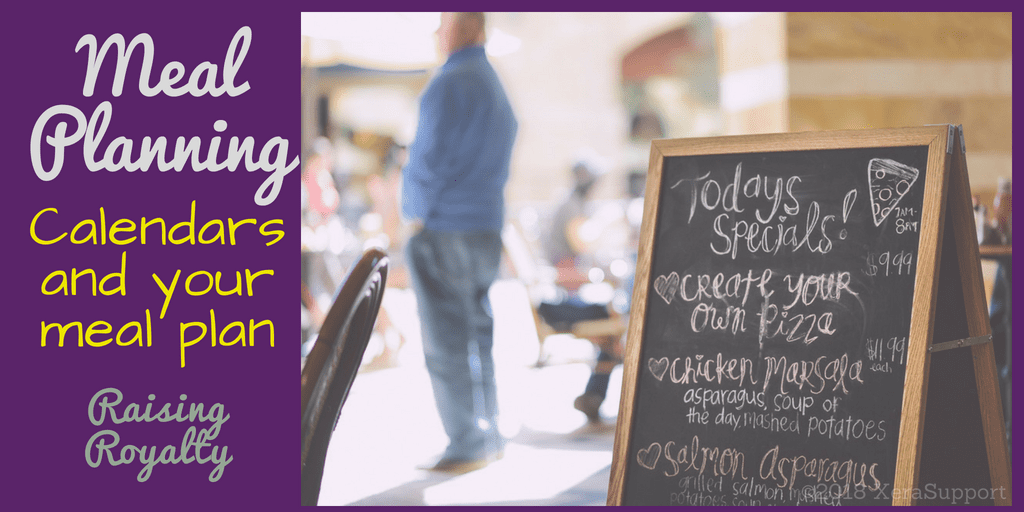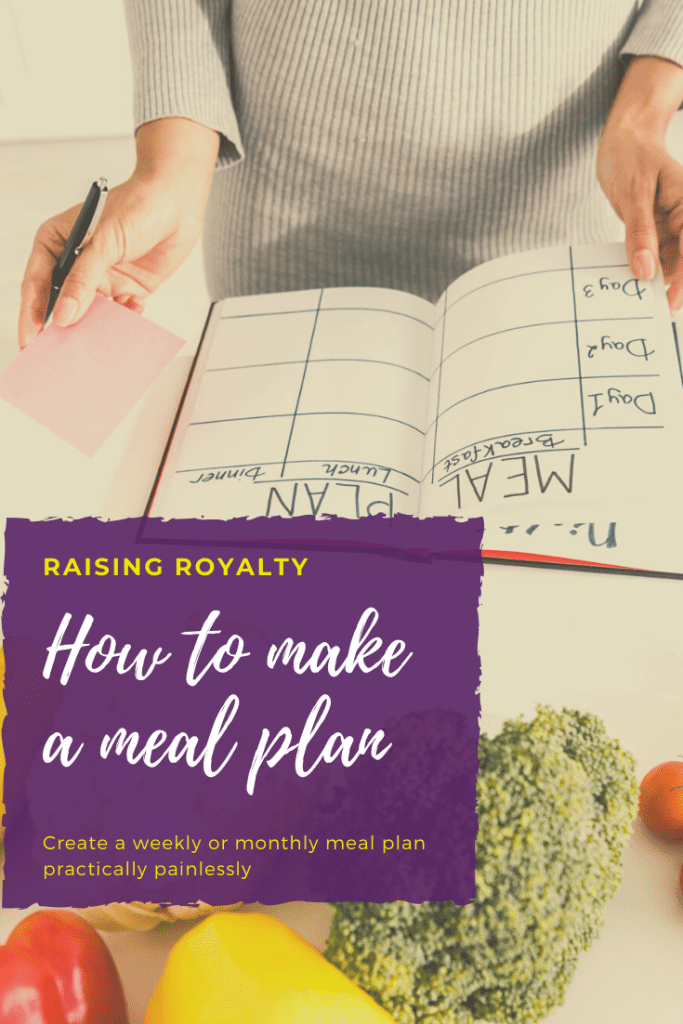
Practically painless meal planning!
I know how to make a meal plan. But despite all my posts on planning ahead, it isn’t my favorite thing to do. Meal planning seems to be a never-ending chore. That’s why my meal plan process is made to be so quick and easy, it’s practically painless!
Once you have your Master List, the rest of your meal planning is a matter of drag-and-drop. The hard part is done. You don’t have to be creative anymore. You just need to match up your meal ideas with your schedule.
How often do you want to plan?
First, decide on how often you want to plan your menu. Many people prefer a weekly schedule. But you could do your meal planning monthly too. Having a Master List of meal ideas makes monthly planning easier.
Weekly meal planning pros and cons
You can match your meals to your schedule and your budget that much easier. You do get a lot more flexibility meal planning weekly rather than monthly. Last minute changes, such as invitations out, won’t mess up your menu, since you can rearrange things a little easier. Unexpected illness or an unplanned financial expense can be managed without stress. You can also plan your meals around your local flyers and sales better, when you plan weekly.
However, weekly meal planning does mean you will be planning your menu much more frequently. It’s more time you have to set aside to actually do the planning — and that can mean you may be less likely to actually plan your meals. And, cost-wise, even if you do shop the sales, it does mean a higher overall cost of food.
Monthly meal planning pros and cons
Planning monthly means you will have less planning time over the course of your month. You can shop in bulk. Your budget will thank you, as your meal costs will be much lower. Monthly planning means you can do things like freezer cooking or batch cooking easier too.
However, unlike weekly planning, you can’t be as flexible with your menu. And when you plan monthly, your upfront costs (not your overall costs!) will be higher. You may find you get a little bit of sticker shock. Monthly planning can make it harder to keep your perspective about your budget.
Consider carefully
Which type of planning suits you, your lifestyle and your family’s budget best? Do you need more flexibility? Have a little more room in the budget? You’ll probably prefer a weekly plan. Need to count every penny? Don’t have time for shopping every week? You may find a monthly plan suits your needs better. Whichever you choose, this system will help you maximize your planning time.
Look at your Calendar.
After you’ve completed your Master Lists, the next step is to look ahead at your calendar. You want to match your meal plan to your schedule. It will only frustrate you if you plan to make a chicken casserole that takes an hour to bake on the night the kids have soccer practice, unless you’re really really good at staying on top of your day. It’s probably a better idea to plan quick-prep meals on the nights that you’ll be in a rush. Save the more elaborate meals for the days that you will be home to enjoy cooking.
You also will want to match your meals to your budget. If your income is bi-weekly, but you plan to shop weekly, you may find the off-week a bit leaner. Plan your steak dinners for when you can afford to purchase the meat. On pay weeks, you can purchase your pantry staples, and only budget for the fresh items you need on the off weeks.
Your calendar will also help you plan ahead for the “what-if” situations. Your schedule may not be set in stone weeks in advance. Work schedules change, invitations aren’t always confirmed right away, and you sometimes don’t have all the information you need right away. So plan a few meals that you can be flexible on. So when your best friend confirms that Friday night works for dinner, you will have that “what-if” dinner planned and shopped for already. No surprises.
Write it down.
Once you have your plans made, you need to write them down! It’s no good to have a plan if you can’t remember what it was, two days from now. Grab a chalkboard, a calendar, or even just a piece of paper that you can scribble down your ideas. Note the main events on each day, and your meals planned. I recommend you include all three meals and your snack ideas, but even if you just get dinner written down, you’ll make your life easier.
Share the plan.
After you’ve written out your meal plan, don’t forget to share it! Post it where everyone can see what’s for dinner. This allows for the guesswork to be taken out of your day. It’s a visible reminder at breakfast to pull out dinner to defrost. Or at lunch, you can ask your partner to pick up a last minute needed item. Or you can have your oldest child peel vegetables ahead of time. When the meal plan is visible and shared, everyone can help in making the meals. That means less work for you!
You know you should meal plan.
Meal planning is one of those things that everyone knows they should do, but sometimes seems more work than its worth. However, I’ve managed to make a meal planning system that not only saves me time and effort, but also keeps the whole process easy and quick. Using a Master List and a calendar, I can keep my planning time to a minimum. And I still reap all the benefits of meal planning, such as keeping a close eye on my schedule and my budget. Meal planning is essential for every busy family.
The Master List
The Grocery list and your Budget
Buy the Practically Painless Meal Planning Workbook!
Which do you prefer: weekly or monthly meal planning?




Pingback: Meal Planning: the Master List ~ Raising Royalty